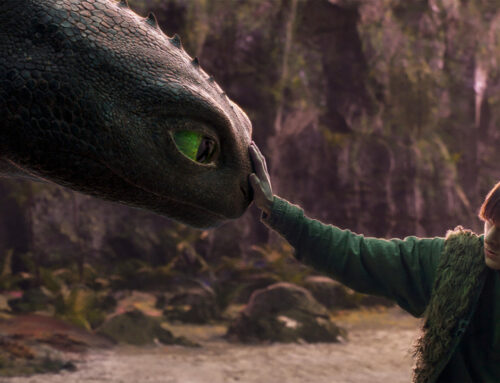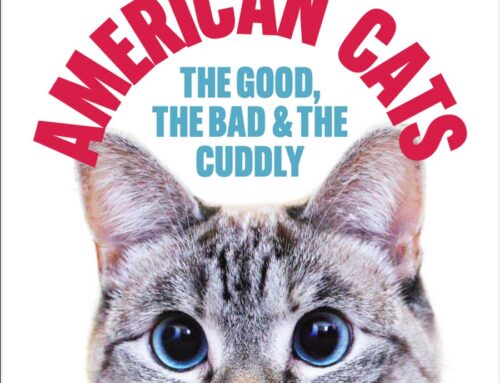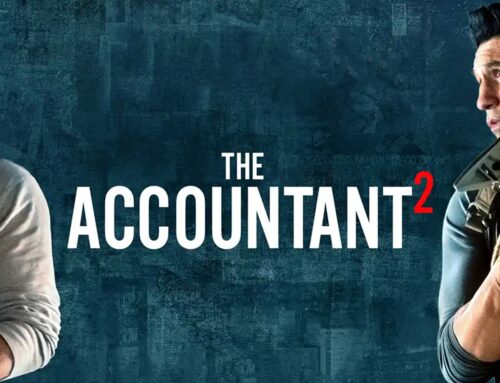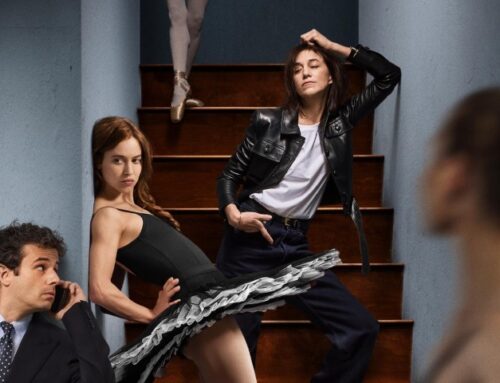When I was 7 years old, my unsuspecting parents took me to the drive-in to see the new Hitchcock film: PSYCHO. To this day, shower curtains creep me out. But my love of movies, and Hitchcock, was sealed forever. As we enter awards season and critics’ groups weigh in on the best cinematic offerings of the year, it’s the perfect time for the release of a movie that sheds light on one of the most influential filmmakers in the world, whose presence still lurks in the corners of movies made by some of the best filmmakers working today. This is a movie cinephiles will absolutely devour: HITCHCOCK/TRUFFAUT. Directed and co-written by Kent Jones this documentary explores one of the most illuminating conversations in the history of film. (I discussed the film on WBUR’S Weekend Edition Sunday)
In 1962, the 63 year-old “Master of Suspense” Alfred Hitchcock agreed to sit down for a series of filmed conversations with the 30 year-old “nouvelle vague” filmmaker and critic Francois Truffaut who idolized him. For one week they talked, through an interpreter, in an airless Hollywood office, and the result was the seminal 1966 tome HITCHCOCK/TRUFFAUT.
Their conversations probed every movie Hitchcock had auteured until then—40 to be exact—unlocking his singular technique. Jones’ enthralling documentary about this encounter goes even further. Not only is it packed with film clips from all parts of Hitchcock’s career, from the luminous silents where he began, to his most famous films like Psycho, The Birds, and Vertigo, but it also contextualizes those conversations through another layer of interviews—with some of the most respected filmmakers of our time including David Fincher, Richard Linklater, Wes Anderson, Peter Bogdanovich, and Martin Scorsese. One major quibble here–as WBUR’s Sharon Brody astutely pointed out in our radio conversation–Jones should have included at LEAST one woman in the mix. Alas, men continue to determine the parameters of our discourse. Be that as it may, the chosen filmmakers further analyze what Hitchcock had done, how he had done it, and attest to the extraordinary influence Hitchcock had on them.
The irony is that in his day, Hitchcock constantly fought the prevailing notion that he wasn’t a serious artist. Jones deftly points out what a turning point these conversations were—for each of them:
“Hitchcock freed Truffaut as an artist, and Truffaut reciprocated by freeing Hitchcock from his reputation as a light entertainer.”
Like any good entertainer, Hitchcock never lost sight of his audience, what he wanted to direct (and misdirect!) them to see, feel, and know, often to the discomfort of his actors. So Cary Grant and Ingrid Bergman in “Notorious” are instructed to keep on passionately kissing, while walking, in extended close up, in one long tracking shot. The sequence is cinematic dessert. We the audience are virtually in the scene with the lovers like voyeurs, or even more intimately, as part of a “menage a trois.”
Hitchcock famously put a light bulb in a possibly poisonous glass of milk in SUSPICION so we keep our eyes fixed on it as it glows supernaturally white in the dark while being carried up a curving staircase to its unsuspecting recipient. For Hitchcock, “logic is dull.”
But this documentary makes clear that it was not only Hitchcock’s knack for stirring up suspense and excitement, but also his unusual access to his own psyche, coupled with his mathematical precision leading him first to engineering then up the studio chain to directing, which yielded such potent results.
The filmmakers Jones interviews remark on Hitchcock’s being among the first to suggest the psychological underpinnings of character by manipulating space and time, giving ordinary objects like ropes and keys “Freudian weight,”and unlocking the dream-like power of silent images. We suddenly understand why in THE BIRDS Hitchcock shoots Tippi Hedren from below as she shrinks in fear, back into the wall as far as possible from the already claustrophobic emptiness of the frame just beyond.
Hitchcock wanted more than anything to get an audience to “react” and become “emotional.” Fascinated by his own fears and obsessions, he is willing to go wherever that leads, and he takes us with him on that thrill ride, to the place where fear and desire intersect.
And so Jones’ documentary takes us inside that shower in Psycho, right along with Hitch and Janet Leigh. We see the meticulously sketched drawings the director mapped out for every slash and droplet. And we understand why the camera is overhead as that blurry image beyond the curtain begins to take horrifying shape. We are waiting with Jimmy Stewart in Vertigo to finally kiss Kim Novak—a man in love with an image he has created, mirroring our own devotion to the illusions we create, and understanding the magnetic pull of the movies on Hitchcock and all of us waiting in the dark with him.
You can then head on over to Boston’s Museum of Fine Arts and immerse yourself in a special Hitchcock film series through December 27: MFA SERIES: THE ART OF ALFRED HITCHCOCK. This 10-film retrospective includes many of my favorites: Strangers on a Train, Rear Window, Vertigo, The Birds and the infamous Psycho, all of which will be screened on 35mm film. Keep your eye out for the filmmaker himself, whose famous celluloid cameos appear when least expected–for the delight of the astute onlooker.






[…] https://joyceschoices.com/movies/movie-hitchcock-truffaut […]
[…] “Directed and co-written by Kent Jones this documentary explores one of the most illuminating conversations in the history of film.” – Joyce Kulhawik, Joyce’s Choices […]